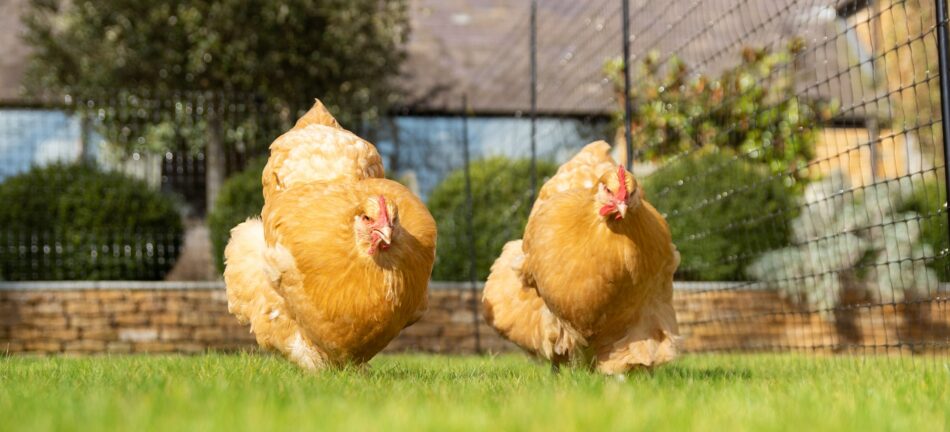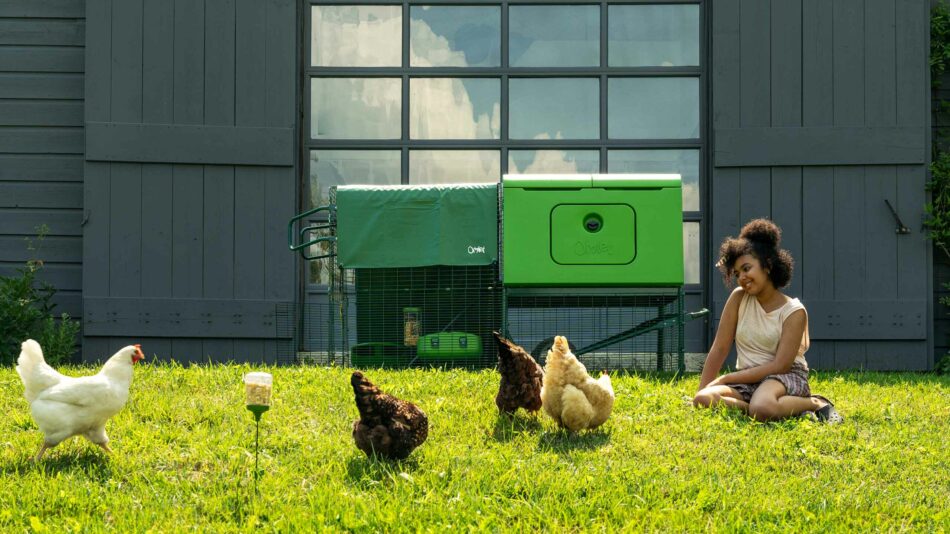How to give your chickens a health check
Making sure your flock is healthy and happy is the responsibility of all chicken keepers. Knowing how to give your chicken a health check will enable you to see that all of your hens are feeling their healthiest. When combined with adequate shelter, nutrition, and enrichment, regular health checks will help your chickens live long, healthy lives. Learn when and how to give your chickens health checks, and familiarise yourself with what’s normal so that you can recognise when something is amiss.
Why are chicken health checks important?
Like other pets, injuries and illness can occur in chickens. Since chickens are prey animals, they are masters at hiding pain and weakness. So while some illness or injuries may seem to occur suddenly to the untrained eye, there may be subtle hints that can be detected through routine health checks.
Routine chicken health checks will also give you a baseline for what’s “normal” for each individual hen. By knowing how your chickens normally look and feel, you’ll be able to more quickly identify a potential issue. Time is of the essence when your chickens are feeling “off” — making regular health checks a vital part of your flock-care routine.
How often should I give my chickens a health check?
It’s likely that you’ll observe your chickens daily as they go about their business in the yard or run. But weekly chicken beak-to-tail health checks are best for heading off potential problems. Each week, handle your hens and go through this checklist:
Eyes
Your chicken’s eyes should be clear, bright and fully open. Any amount of discharge, whether clear and watery or thick and yellow or green, is abnormal. Their eyes should also be properly lubricated and not appear dry, and third eyelids should slide easily and retract fully.
Nose
Nostrils, or nares as they are called in chickens, are located on the top of the beak near the eyes. Nares should be clean and free from debris, and should not have any discharge. Breathing sounds should not be audible.
Beak
Your chicken’s beak should be smooth, without cracks or other damage. The top and bottom should align, with the top being slightly longer. Healthy chickens keep their beak closed most of the time.
Comb
A grown chicken who is not broody or moulting should have a firm, bright red comb. It should be positioned according to the breed standard, i.e. if the breed’s comb is upright, it should not be hanging or looking shrivelled.
It’s especially important to check combs and wattles in winter, as they are prone to frostbite. Larger combs can be protected by a daily layer of vaseline.
Crop
Chickens have a “crop” at the base of their esophagus that holds their food before it’s moved through the rest of their digestive system. You can feel the crop by palpating by the breastbone of your chicken at the base of their neck. It’s easiest to feel when your chicken has just eaten — it will feel firm and about the size of a golf ball. Empty crops usually can’t be felt.
When you first let your chickens out in the morning their crops should be empty, as they should have spent all night digesting their food. After eating, the crop will feel firm, but not rock-hard. If it never feels empty, full even after not having food all night, or if your hen’s breath is foul smelling, you could be dealing with an impacted or sour crop.
Feathers
With the exception of moulting season in chickens, your hens’ plumage should be full and shiny. Bald patches, broken feather shafts, or unkept feathers can all be signs of stress, parasites, or behavioural concerns.
Legs and feet
Your chicken’s legs should appear smooth, with the scales lying flat against the bone — raised or dry scales can be an indication of scaly leg mites. The bottoms of the feet should be smooth and free of cuts, discoloured spots, or bumps. Large bumps on the bottoms of the feet can indicate bumblefoot in chickens, which is a bacterial infection.
Vent
The vent, or cloaca, of chickens is where eggs and eliminations are expelled from the hen’s body. Laying-age hens have pink, wide, and moist vents, while vents in older hens may appear dry and more pale. Healthy vents should never protrude or appear injured. Mites and lice gravitate toward this area, so check for black specks of debris or skin irritation.
Droppings
Slide out dropping trays, like those on Eglu chicken coops, help you keep an eye on your flocks eliminations. Chicken droppings should be formed and somewhat firm, and dark brown in colour. Loose, white portions on these droppings are also normal. Your chickens’ droppings will vary depending on their diet for the day, but should always revert back to “normal” within a day or two of eating new or diverse foods. Extended periods of loose stool, or bloody stool is an indication of illness or stress.
What to do if your chickens aren’t feeling their best
If any of your findings during the chicken health check are abnormal, it’s best to separate the affected hen from the rest of the flock and contact your veterinarian for further guidance. Make sure that you have a veterinarian that treats poultry as a point of contact. Some veterinarians may be able to come to you, or give you advice over the phone on how to proceed with any chickens that feel under the weather or that appear injured.
Isolate ill or injured hens until their symptoms have cleared, or until you’re advised by your veterinarian that it’s ok to reintroduce them back into the flock. Having a back up chicken coop to serve as a hospital wing or quarantine coop is always a good idea. This will ensure that the chickens that any chickens that aren’t feeling their best will still be housed in the best accommodations possible — which will help aid in reducing their stress and boosting their recovery.
Omlet and your healthy hens
A healthy flock starts with their housing and care. Our chicken coops are easy to clean, and offer the support and security that your flock needs. When they’re not sleeping or laying eggs in their coop, your hens will enjoy their time outside safely inside our walk in chicken runs, protected from predators. Add chicken run weather covers, and your flock will be ready to enjoy healthy, happy seasons in their home with you.
This entry was posted in Chickens


